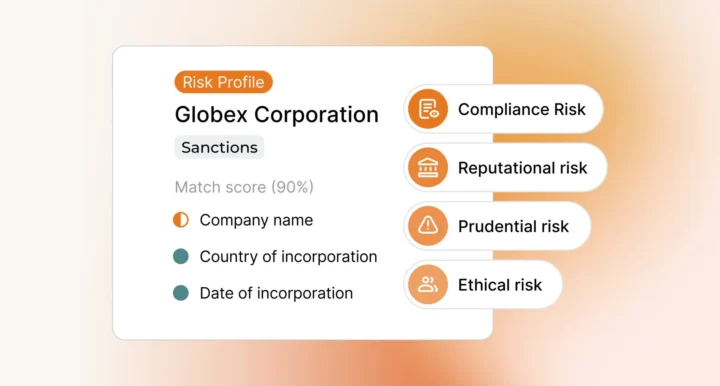In October 2022, the Australian Transaction Reports and Analysis Centre (AUSTRAC) released guidance on how firms should conduct source of funds and source of wealth checks on their customers, as part of their anti-money laundering (AML) and counter-financing of terrorism (CFT) obligations. Following draft guidance released earlier in 2022, the publication emphasises the importance of the risk-based approach, which requires firms to assess each customer’s risk individually and deploy proportionate compliance measures.
AUSTRAC’s focus on source of funds and wealth comes in the context of an ongoing investigation in Star Entertainment Group, which allegedly submitted fake source of funds letters to the Bank of China to prevent appropriate AML checks into certain customers’ gambling income. If the investigation finds that the letters were faked, Star Entertainment Group could be charged with money laundering offences, and face significant financial and criminal penalties.
The new AUSTRAC source of funds and source of wealth guidance is designed to help firms in Australia deal more effectively with suspicious high value transactions, and so sets out directions for collecting relevant source of funds and wealth information, and for verifying that information. With the Star Entertainment Group investigation ongoing, it is important the firms in Australia become familiar with the new guidance, and implement it within their own compliance solutions.
Defining Source of Funds and Source of Wealth Checks
AUSTRAC’s guidance states that the identification of sources of funds and wealth “is an important part of understanding your customers’ financial circumstances, background and position” and, crucially, can indicate whether a customer is involved in criminal activity. Before establishing a customer’s source of funds or wealth, however, it is necessary to define certain concepts associated with the check process:
Source of funds: The funds involved in specific transactions or used to pay for designated services. Examples might include gambling payouts, shares and dividends, inheritance payments, pension payments, legal compensation or the sale of property, artwork, or vehicles.
Source of wealth: The funds that comprise a customers’ entire wealth and assets. Source of wealth may also take in the activities that contributed to a customer’s net worth. Examples might include long term investments, income from employment, income from rental properties, income from businesses, and assets acquired through inheritance.
Risk-based approach: AUSTRAC has previously published guidance around the risk based approach to AML/CFT, which essentially enables firms to balance their compliance resources and budget with the level of risk that they face. In practice, ‘risk-based’ means that higher risk customers should be subject to enhanced due diligence (EDD) measures that involve greater scrutiny of their financial activities. Source of funds and source of wealth checks should be part of the EDD process since they enable firms to establish how and where customers obtained their funds and assets.
Key Guidance
AUSTRAC’s 2022 guidance involves the following key points:
Risk triggers: Source of funds and wealth checks should be triggered under certain EDD circumstances, including:
- The overall rating that a customer risk assessment generates, which may depend on the customer’s circumstances, transactional activity, geographic location, and the products and services that they use.
- The quality of a customer’s due diligence information. Incomplete, missing, or fraudulent information, for example, may indicate that a customer has high AML/CFT risk and that their source of funds or wealth should be scrutinised.
- Adverse media that indicates a customer is involved in criminal activity or that their AML/CFT risk profile has changed (such as designation on a sanctions list, for example).
Politically exposed persons: Government employees and elected officials, known as politically exposed persons (PEP), carry a higher AML/CFT risk. Accordingly, AUSTRAC requires firms to conduct source of funds and source of wealth checks on all PEP customers, along with their relatives and close associates (RCA). It is worth noting that foreign PEPs present a particularly high AML/CFT risk.
Privacy law: Source of funds and source of wealth checks often involve the collection of customers’ sensitive personal data, which means that firms should be aware of their responsibilities under Australian privacy law. AUSTRAC emphasises the need to consult the Australian Privacy Principles when collecting funds and wealth data.
Verifying Source of funds and Source of Wealth
AUSTRAC directs firms to collect and analyse a range of information in order to verify sources of funds and wealth. That process may include consulting resources already provided by customers, requesting a formal declaration from customers, and searching secondary sources such as websites, adverse media, commercial databases, and sanctions and watchlists.
The specific approach a firm takes to verifying source of funds and source of wealth may vary:
Source of funds verification: In order to verify sources of funds, firms must establish the origin of a customer’s funds, and substantiate how the customer received the funds in the first place (property sales, gifts, etc). Where a third party has provided a customer with funds, firms should seek to verify that original transaction.
Source of wealth verification: AUSTRAC warns that it may be more difficult to verify sources of wealth than sources of funds, and that the type of information required for satisfactory verification may vary depending on a customer’s risk. The guidance suggests that source of wealth verification should be obtained via reputable sources, including company registries, banks, accountants, and lawyers.
Using Technology to Enhance Source of Funds and Wealth Checks
Effective risk-based source of funds and source of wealth checks require firms to collect a range of data, sometimes from disparate, unstructured sources, in order to ensure that they understand their customers’ risk profiles. That objective means screening customers and transactions on an ongoing basis so that firms can detect suspicious transactions and changes in risk as soon as possible. With that challenge in mind, it is crucial that firms implement screening technology capable of managing vast amounts of data, from domestic sources and from around the world, to generate information about funds and wealth quickly and efficiently.
Ripjar’s Labyrinth Screening solution enables firms to enhance their source of funds and source of wealth checks significantly, gathering customer data from thousands of sources in real time, including sanctions and watch lists, PEP lists, and foreign adverse media stories in over 20 languages. Integrating powerful machine learning technology, Labyrinth blends structured and unstructured data seamlessly in order to reconcile customers’ financial activities with expected behaviour. With Labyrinth Screening we aim to optimise the results of source of funds and wealth checks, reducing noise and false positives in order to deliver actionable intelligence and, ultimately, help you make crucial compliance decisions.
To learn more about risk-based
AML/CFT screening solutions, contact us today.
Last updated: 3 February 2025





